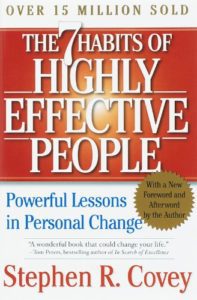
by Phil Latz
Hi, welcome to the sixth blog in my personal growth series that I hope will help you become more successful in your business.
As a business owner myself for many years, I understand the challenges that you face.
Today I’ll be sharing with you about how to make the most of your time.
Do you find yourself wanting to do more things than you have time to do?
Do your days seem to race by with half the things on your ‘to do’ list still not done by the end of the day?
If your answer is Yes, then welcome to the club! Just about anyone with any level of ambition will tell you that they don’t have enough time to do all the things they’d like to do.
That’s not because they’re lazy. But because our time is finite.
You need to start by understanding just how precious time is. Time is more valuable than money.
If I give you a thousand dollars, I can go out and earn some more money to replace it.
But if I give you an hour of my time, it has gone forever. No amount of money can buy you more time.
I recently watched an excellent Netflix documentary series entitled ‘Inside Bill’s Brain: Decoding Bill Gates’. It’s a behind the scenes look at the life of the richest man on the planet. Bill Gates is worth something like $100 billion US dollars, but he is unable to buy a single extra minute in his day. He has to live with the same 24 hours that everyone else gets.
So what does Bill Gates do about it? He makes the most of every moment.
He employs personal assistants to carefully manage his meetings. He prioritises. Interestingly, he studies voraciously, constantly reading and learning.
These days, Bill no longer works at all at Microsoft, the company he founded that continues to drive his wealth. His focus is upon eliminating diseases and advancing other humanitarian causes through the Bill and Melinda Gates Foundation. If anything, Bill Gates who was born on 28th October 1955, is more driven than ever.
I’ve read a lot about time management over the years, but one methodology that I first read about back in the early 1990’s has always resonated with me. So much so, that whenever I hired a new team member into our company, I would sit down with them and share this idea.
You can read about it in this book, The Seven Habits of Highly Effective People by Steven Covey. In an age when business books can be out of date in a year or two, this book, which was written back in 1989, remains a best seller.

I’d recommend that you read or listen to this book. Remember, the more you learn you earn.
There are many wise teachings in this book of which the Four Quadrants, that I’m going to share with you now, is just one.
Every single task that you do in your working life can be divided into four quadrants.
The vertical axis denotes importance. The bottom is unimportant, the top is the most important tasks.
On the horizontal axis denotes urgency. The left side is most urgent, the right side is not urgent.
So the quadrants can be described like this:
Quadrant 1 tasks are both urgent and important
Quadrant 2 tasks are not urgent, but important
Quadrant 3 tasks are urgent, but not important
Quadrant 4 tasks are not urgent and not important
How can you discern if a job is urgent or important? Urgent jobs are right in front of us, the phone ringing the person asking for an answer. If you don’t respond to them quickly, there will be an immediate consequence.
Important jobs are more closely linked your mission, your values, your high priority goals. You could say that they’re the bigger picture jobs. They won’t shout at you like the urgent jobs, but if you neglect them, you’ll wake up one day years later and wonder how you could have worked so hard, for so long to achieve so little.
The key question to ask yourself is, ‘In which quadrant should you be spending most of your work time?’
Think about it and speak out your answer now.
I’ve asked this question many times over the years to my new staff members and other people I’ve trained.
Chances are that you gave exactly the same answer that almost all of these people gave me, ‘Quadrant 1 of course because it’s both urgent and important!’
Please don’t take offence, but you’re wrong. Your key to long term success is to spend as much of your time in Quadrant 2, not urgent, but important.
Note that I added the words ‘long term’ before ‘success’. Right now, you might well have a pile of Quadrant 1 tasks that are demanding your attention. But if you shift your thinking, you’ll gradually be able to make more time for Quadrant 2.
Spend your time in Quadrant 2 and your benefits will include vision, perspective, balance, discipline, control and fewer crises.
On the other hand, if you stay in Quadrant 1 your business life will be accompanied by stress, burnout, crisis management and constantly putting out fires.
So exactly how can you make this change?
Initially, the low hanging fruit will be Quadrant 4. You should try to eliminate these tasks entirely. Quadrant 3 tasks should be batched up and done as quickly as possible, or better still, delegated if you have anyone helping you.
Allocate all the time you’ve saved into Quadrant 2 tasks. These include things like working on your business, not in your business, budgeting, planning, learning, making important decisions.
If you procrastinate on Quadrant 2 tasks, they migrate across to the left, to Quadrant 1.
Meanwhile, there’s no avoiding the fact that you have to deal with the pre-existing Quadrant 1 tasks that are upon you right now.
It might take months or even years to restructure your life and your mindset to eliminate Quadrant 1. You might never fully achieve this, but even if you can increase your Quadrant 2 time from say 5% to 20%, that would still be a fourfold increase that would reap huge benefits for you.
To summarise, remember that your time is the most precious asset. Think carefully about how you are spending it and prioritise the important over the urgent.
I hope that this blog has given you a helpful plan for how to allocate your work time.
In the next blog in this series, I’m going look at another aspect of how to make the most effective use of your time.
I believe that with passion, consistent effort and wise advice you can succeed in your business.
I wish you all the best and I’ll see you next time.


